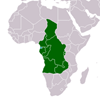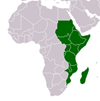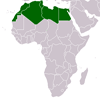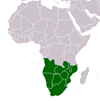Poverty and Social Transfers in Poland
Poverty and Social Transfers in Poland
March 1995
How well did Poland's system of social transfers help alleviate poverty in 1993, and what changes in the allocation of social transfer funds would improve the distribution of income?
Since January 1990, Poland's social safety net has changed greatly. Unemployment benefits were introduced, for example, because of escalating unemployment (about 15 percent of the labor force at the end of 1993). The cost of the social safety net has risen sharply since the transition began, both absolutely and as a fraction of GDP. In 1993, social transfers accounted for 18.7 percent of GDP, as follows: (1) pensions=14.9 percent, (2) unemployment benefits=1.9 percent, (3) family allowance and other social insurance=1.4 percent, and (4) social assistance=0.5 percent.
To investigate the present system's impact on income distribution, Grootaert uses the household budget survey data for January-June 1993, the first complete survey of the Polish population. The conventional benchmark for measuring poverty in Poland, the social minimum, has become largely irrelevant, as 55 percent of the people fall below that spending level. Using two other measures, Grootaert finds that in 1993 26.3 percent of the population had an expenditure level (per adult equivalent) below the minimum wage, and 14.4 percent were spending at a level below the minimum pension.
He discusses four proposals for improving the ability of social transfers (other than pensions) to reduce poverty. These proposals are either budget-neutral or imply only modest increases in the total amount of transfers:
° Income-testing the family allowance and doubling the amount for large households. This would reduce poverty from 14.4 to 13.2 percent -- and, among large households, from 43 to 28 percent.
° Reducing eligibility for the family allowance from 20 to 18 years and taxing the allowance; providing income-tested daycare vouchers for young children. This would make the family allowance more progressive. Reducing eligibility and taxing the allowance would raise poverty about 1 percentage point, which would be largely offset by the daycare vouchers.
° Improving income testing for social assistance. More than half of current beneficiaries are not poor. A 20 percent improvement in targeting would reduce poverty by about 0.3 percentage points.
° Extending eligibility for unemployment benefits for low-skilled unemployed members of the labor force in large households. This would increase benefits by about 7 percent, but reduce poverty about 0.4 percentage points -- benefiting especially the poorest part of the population.
This paper -- a product of the Country Operations Division, Europe and Central Asia, Country Department II -- is part of a larger effort in the department to undertake poverty assessments in the region. The author may be contacted at cgrootaert@worldbank.org.
CITATION: Grootaert, Christiaan. Poverty and Social Transfers in Poland . Washington, D. C. : World Bank Group , 1999. - Available at: https://library.au.int/poverty-and-social-transfers-poland






